 Following reports yesterday of difficulty between Toshiba and Sony in agreeing on the Unified DVD format, bringing together HD-DVD and Blu-Ray, we’ve spoken to Sony and they have confirmed difficulties.
Following reports yesterday of difficulty between Toshiba and Sony in agreeing on the Unified DVD format, bringing together HD-DVD and Blu-Ray, we’ve spoken to Sony and they have confirmed difficulties.
Disc capacity
Blu-Ray, surprise, surprise uses a blue laser, as does HD-DVD. They didn’t just like blue lasers because it fits in with their name, or even that it’s their favorite colour, the shorter wavelength of the blue light, 405nm, (think of its position in the rainbow relative to the red, 650nm) allowed for higher density of their disks. Current CD and DVD media uses red lasers.
The difference in capacity of the two formats is pretty large. A single layer disc yields quite a difference – HD-DVD provides 15GB, and Blu-Ray 25GB.
Blu-Ray are claiming that their eight layer disks can hold 200GB of content, a considerable amount in anyone’s book. They’ve also told us they’re working on ten and twelve layer disks, pushing storage even higher to 300Gb. HD-DVD holds 30GB on their dual layer disks.
Why extra capacity is a sticking point
Many may wonder why 200GB is needed for a disk (not you, dear reader, I’m sure). Well while the storage requirements of HD content has a small part to do with it, the obvious use is to provide near-endless ‘extra’ material to go with the film on the disk (even if the purchaser isn’t interested in it). Less obviously, is placing material on the disk that is locked.
 We think that Blu-Ray’s dogged pursuit for high capacity (possibly in the face of Unified DVD), and the fact that Sony are driving Blu-Ray is no coincidence.
We think that Blu-Ray’s dogged pursuit for high capacity (possibly in the face of Unified DVD), and the fact that Sony are driving Blu-Ray is no coincidence.
Sony, having learnt its lesson during the Betamax/VHS wars, now own a serious amount of content and the studios want to make more. We imagine that the content side of Sony’s business is pushing hard to extra capacity for commercial reasons.
Think about it – what do media companies want to do? Reduce the involvement of the middle man, or cut it out completely. If they are able to sell a disk with one accessible film on it, plus a number of films on it that are locked, they’ve reduced their distribution costs, and importantly, kept percentage paid to the retailer to a minimum. To access the extra films, the purchaser simply has to contact the media owner.
An important part of the Blu-Ray standard is its online capabilities, so the unlocking could be requested and paid for through the player, or via the phone for the die hards. The great thing, at least in the eyes on the media owner, is that the additional income generated is nearly all profit.
Difference in programming One thing that appears to have been missed by most commendations on Unified DVD is the world of difference in the programmability of HD-DVD and Blu-Ray. As a player supporting both standards isn’t realistic, one of the sides would have to change completely. This leads to considerable additional cost for the media creator, forcing them to effectively have to programme the whole disc twice.
 Cover layer thickness difference
Cover layer thickness difference
This is possibly the unbridgeable gap. Cover layer thickness – how close the information is written to the surface of the physical disc. Blu-Ray is 0.1mm and HD-DVD is 0.6mm. HD-DVD has plumbed for the 0.6mm, the same standard as current DVD’s. From our discussion, this appears to be an intractable difference.
The difference in layer thickness is one of the factors that makes manufacturing Blu-Ray discs more expensive, as the equipment used to create the disc has to be replaced.
Both sides have been busy gathering supporters of their own formats, in a not dissimilar way to two groups at school picking teams in the playground, trumpeting when another new chum joins their gang.
It will be a great shame if Unified DVD does fail. We all know what will happen – everyone suffers from the producers of the content to the consumer. At this time, it looks like we’re going to have to prepare for that.
HD-DVD
Blu-Ray
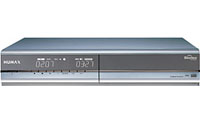 Humax have dished out detailed information about their new dual-tuner, Freeview-enabled PVR, the PVR-9200T.
Humax have dished out detailed information about their new dual-tuner, Freeview-enabled PVR, the PVR-9200T. Receiving and recording of pay TV channels is possible through a special CA module.
Receiving and recording of pay TV channels is possible through a special CA module. There’s also a handy USB2.0 port provided for MPEG A/V file transfers between the Duovisio and a PC, letting users play back their digital photos or listen to MP3 files downloaded from a PC.
There’s also a handy USB2.0 port provided for MPEG A/V file transfers between the Duovisio and a PC, letting users play back their digital photos or listen to MP3 files downloaded from a PC. This regional order has been determined by a technical criteria determined by the broadcasters and Ofcom. The regional order will follow ITV regions. This ensures that the impact on ITV regional advertising markets is minimised.
This regional order has been determined by a technical criteria determined by the broadcasters and Ofcom. The regional order will follow ITV regions. This ensures that the impact on ITV regional advertising markets is minimised. Comment – It is interesting that London will be switched in 2012. Same year as we host the Olympics.
Comment – It is interesting that London will be switched in 2012. Same year as we host the Olympics. From a technical perspective switchover it is not going to be a walk in the park. A phased switchover to digital by geographical area between 2008 and 2012. And we’ll only know how many people might be unable to get digital television once the analogue signal has been turned off and the digital signal boosted.
From a technical perspective switchover it is not going to be a walk in the park. A phased switchover to digital by geographical area between 2008 and 2012. And we’ll only know how many people might be unable to get digital television once the analogue signal has been turned off and the digital signal boosted.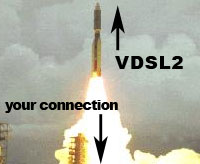 After demonstrating that high-definition television over copper was achievable through networks with increased bandwidth capabilities and compression techniques, France Telecom is looking to develop the technology and is currently testing VDSL2 transmission systems in its R&D Laboratories.
After demonstrating that high-definition television over copper was achievable through networks with increased bandwidth capabilities and compression techniques, France Telecom is looking to develop the technology and is currently testing VDSL2 transmission systems in its R&D Laboratories. All clear on that, now?
All clear on that, now? Toshiba has unveiled its new DVD recorder with the handy ability to set up and record TV programmes via email.
Toshiba has unveiled its new DVD recorder with the handy ability to set up and record TV programmes via email.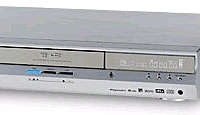 The RD-XS54 comes with Toshiba’s EASY NAVI menu and the TV Guide On Screen Interactive Program Guide for simple, easy-peasy channel navigation and recording scheduling.
The RD-XS54 comes with Toshiba’s EASY NAVI menu and the TV Guide On Screen Interactive Program Guide for simple, easy-peasy channel navigation and recording scheduling. With Sony and Toshiba still enjoying a schoolyard scrap over which of their rival formats should become the standard format for next-generation DVDs, Samsung have announced a nifty compromise that plays both formats.
With Sony and Toshiba still enjoying a schoolyard scrap over which of their rival formats should become the standard format for next-generation DVDs, Samsung have announced a nifty compromise that plays both formats.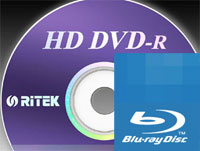 Although both Blu-Ray and HD DVD use groovy blue laser light to dramatically increase the storage capacity of a DVD-sized optical disc, they work in completely different ways.
Although both Blu-Ray and HD DVD use groovy blue laser light to dramatically increase the storage capacity of a DVD-sized optical disc, they work in completely different ways.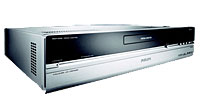 Philips has announced the Showline MCP 9350i, a media PC powered by Microsoft’s Windows XP Media Center Edition 2005 platform.
Philips has announced the Showline MCP 9350i, a media PC powered by Microsoft’s Windows XP Media Center Edition 2005 platform. There are two integrated tuners onboard letting sofa-reclining types watch one channel while recording another on the 250 GB hard drive or to CD or DVD.
There are two integrated tuners onboard letting sofa-reclining types watch one channel while recording another on the 250 GB hard drive or to CD or DVD.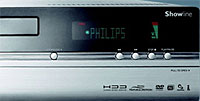 Philips’ Digital Natural Motion technology is employed to improve video quality and reduce stutter, with built in support for the UPnP protocol to allowing the unit to act as a media server for products in Philips’ Streamium range of media viewers.
Philips’ Digital Natural Motion technology is employed to improve video quality and reduce stutter, with built in support for the UPnP protocol to allowing the unit to act as a media server for products in Philips’ Streamium range of media viewers. Following
Following 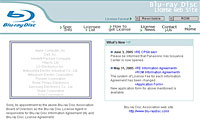 We think that Blu-Ray’s dogged pursuit for high capacity (possibly in the face of Unified DVD), and the fact that Sony are driving Blu-Ray is no coincidence.
We think that Blu-Ray’s dogged pursuit for high capacity (possibly in the face of Unified DVD), and the fact that Sony are driving Blu-Ray is no coincidence. Cover layer thickness difference
Cover layer thickness difference